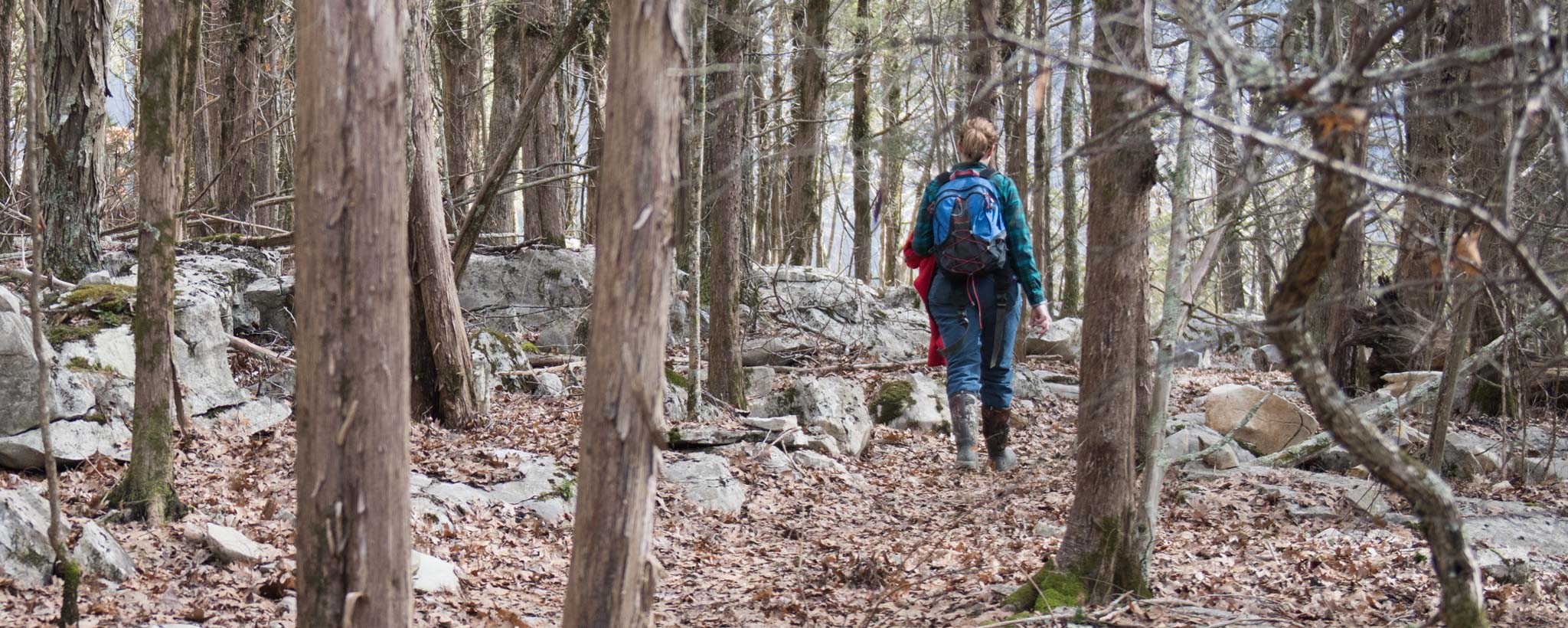
Hike into the New Year
We all do it—we make a resolution vowing to improve our health habits in the new year. What better time to get started than on New Year’s Day? Here’s how to have fun and stay safe while hiking.
On January 1, state parks in all 50 states will offer free, guided First Day Hikes. They offer a family-friendly chance to burn off some holiday calories in the great outdoors. The guided hikes are sponsored by America’s State Parks, and last year nearly 55,000 people took advantage of them, collectively hiking over 133,000 miles.
But you don’t have to join an official event to have a First Day Hike of your own. Hit the trails in a state park, a national park or check out TVA’s many trail options throughout the Tennessee Valley. For inspiration, we’ve gathered some of our most beautiful winter hikes here.
Stay Safe While Hiking
Just don’t ruin your day by being unprepared. TVA Natural Resources employees spend a great deal of time outside, and follow these basic safety practices every time.
“Hiking in the winter can be really enjoyable, but it requires some common-sense precautions,” explained Heather Hart, Natural Resources specialist. “When you’re on the trail it’s easy to get lost in the moment, looking at the scenery, but you should always be prepared before you go and you should always remain aware of your surroundings while you’re there.”
- Check trail and weather conditions before you head out on the trail.
- It’s best to hike with others. If you’re walking alone, always tell at least two people where you are going and when you plan to return.
- Dress in layers. A huge, heavy coat isn’t practical and can even be dangerous if you become overheated.
- Wear bright colors so hunters can see you.
- Wear a hat. It’s true that a lot of body heat escapes through your head if it’s not covered.
- You still need sunscreen. Especially in snowy conditions or at high altitudes, the sun can burn you just as badly as on a summer day.
- Bring a headlamp or flashlight with extra batteries. Dark falls quickly in the winter, and if you are in a heavily wooded area you can suddenly find it difficult to see the trail.
- Keep an eye out for tree roots, dislodged rocks and slick patches on the trail. A sprained ankle when you’re miles from the trailhead is a nightmare.
- Watch and listen for wildlife. Bears and other creatures spend time being dormant in the winter, but not all bears hibernate. Black bears in the Southeast can remain active all winter.
- Make a little noise as you hike. Chat with your companions, sing, etc. Animals will hear you and avoid you.
- If you do encounter a bear, stand still and face it directly. Make yourself look as big as possible by spreading your arms or coat. Make noise by yelling, banging objects, etc. Back slowly away—don’t run.
- NEVER approach ANY wild animal! That Instagram photo isn’t worth provoking a dangerous encounter.
- For additional winter hiking tips, visit the National Park Service website.
There are numerous First Day hikes scheduled all over the TVA service area.